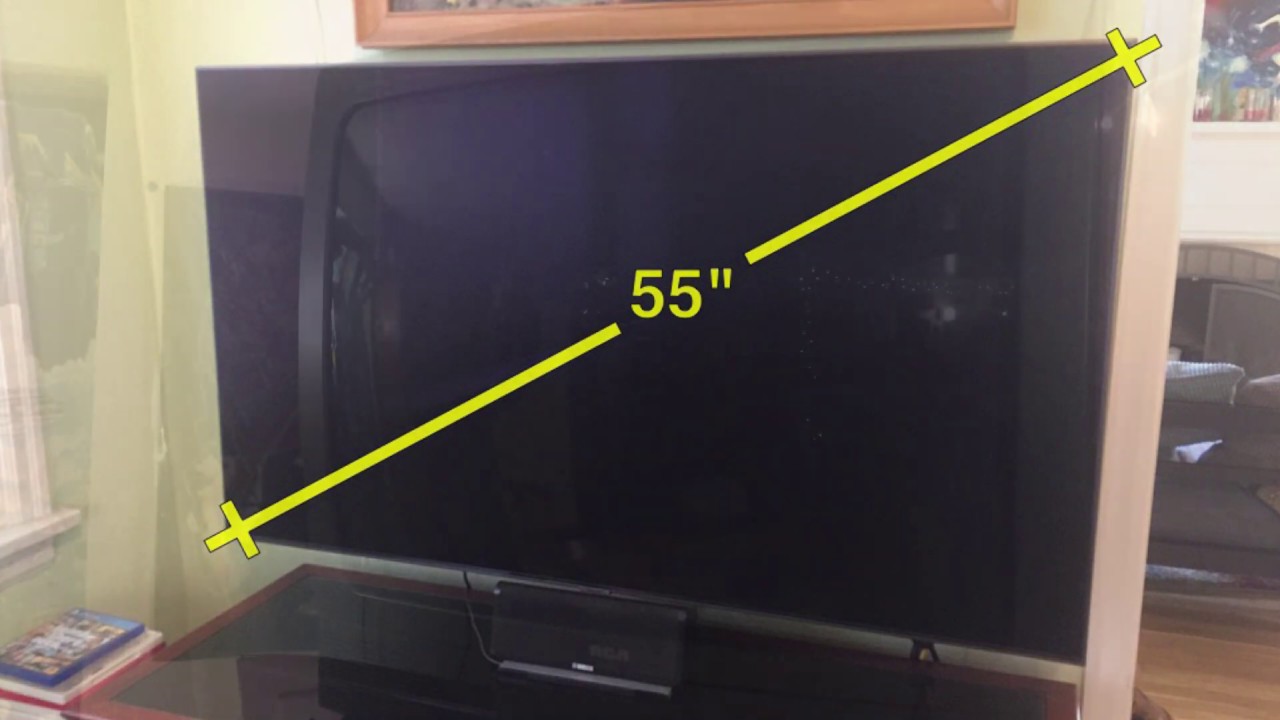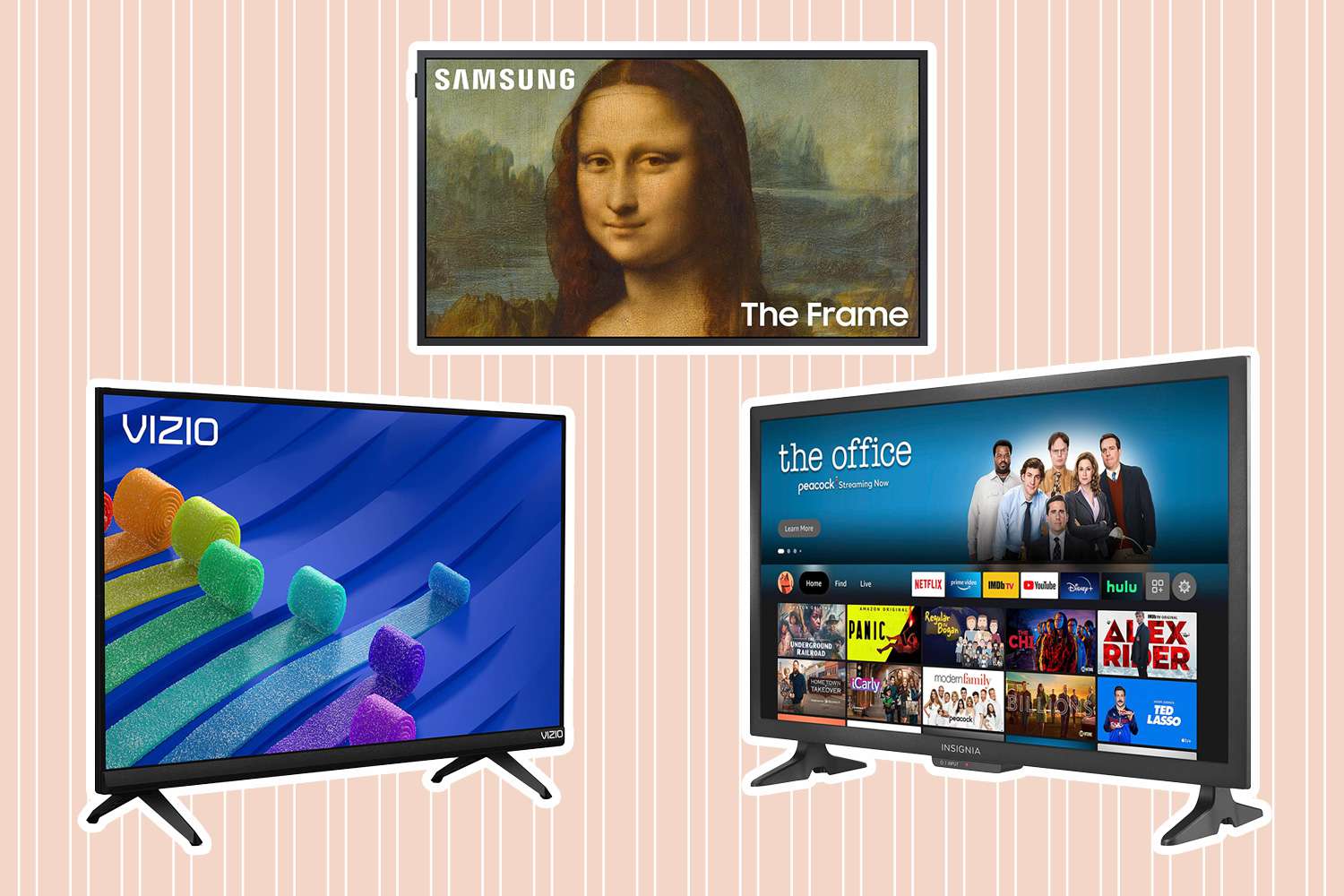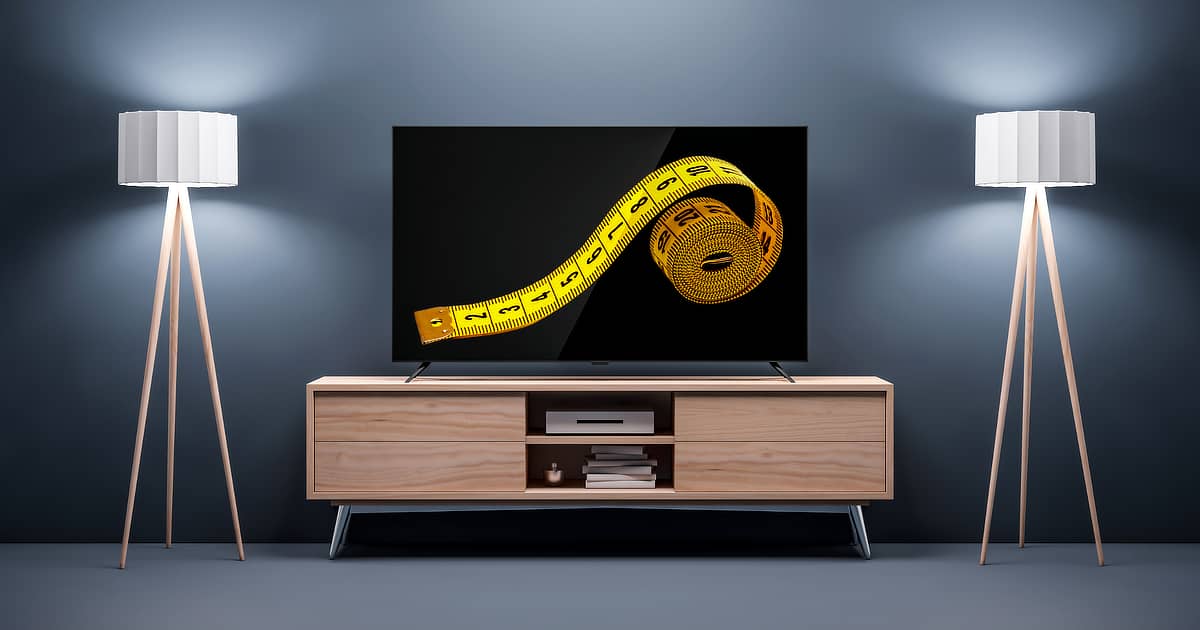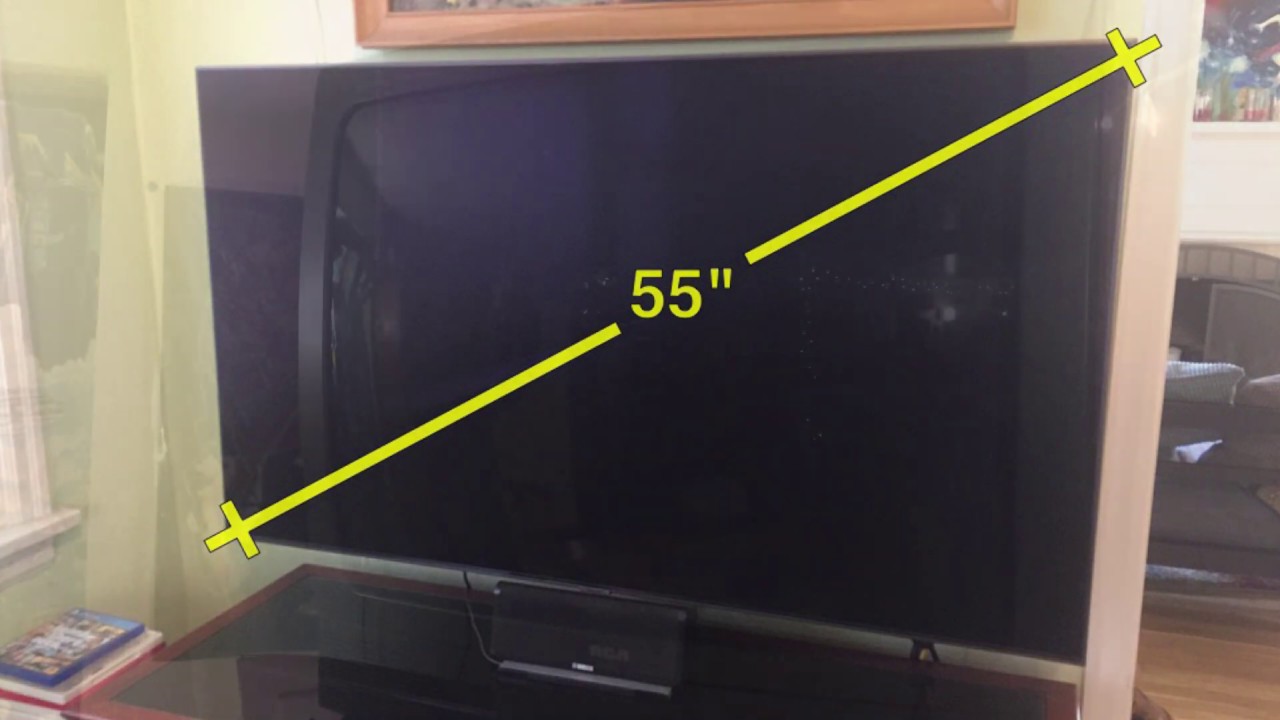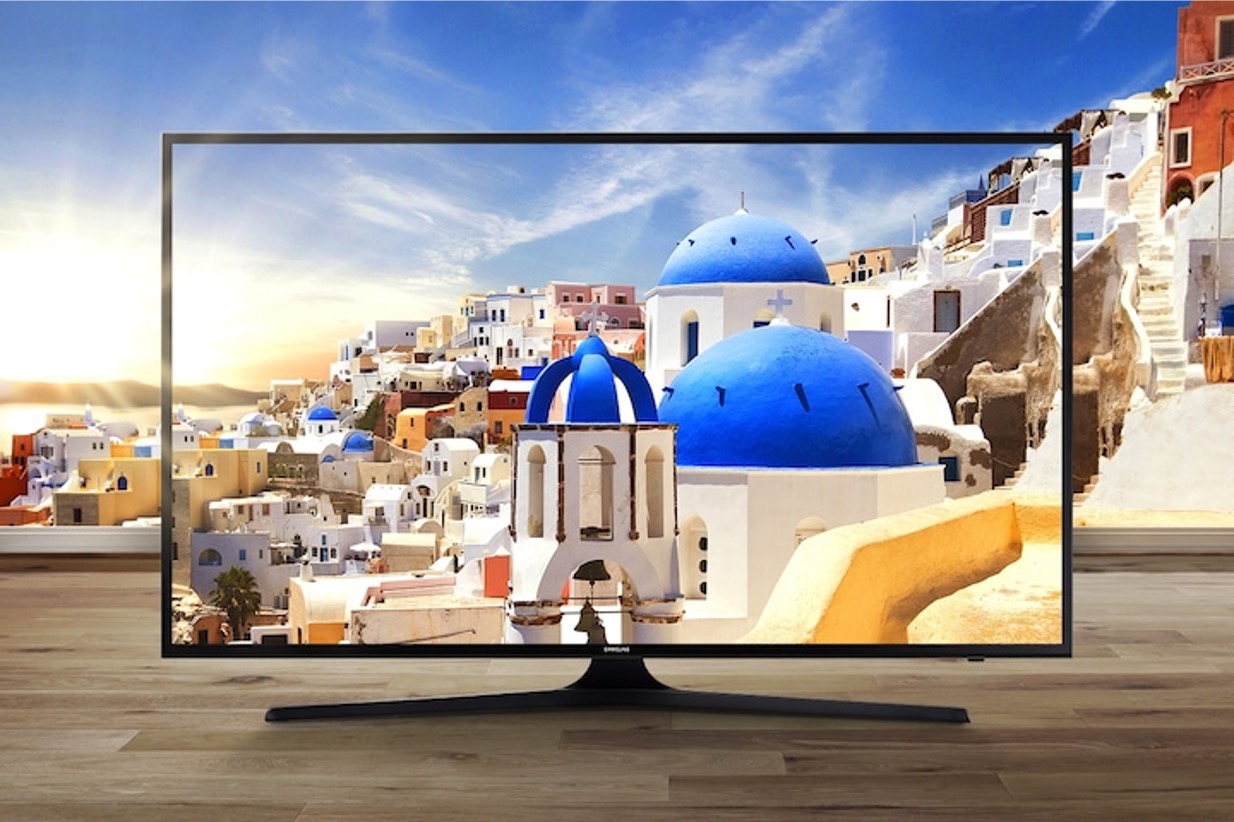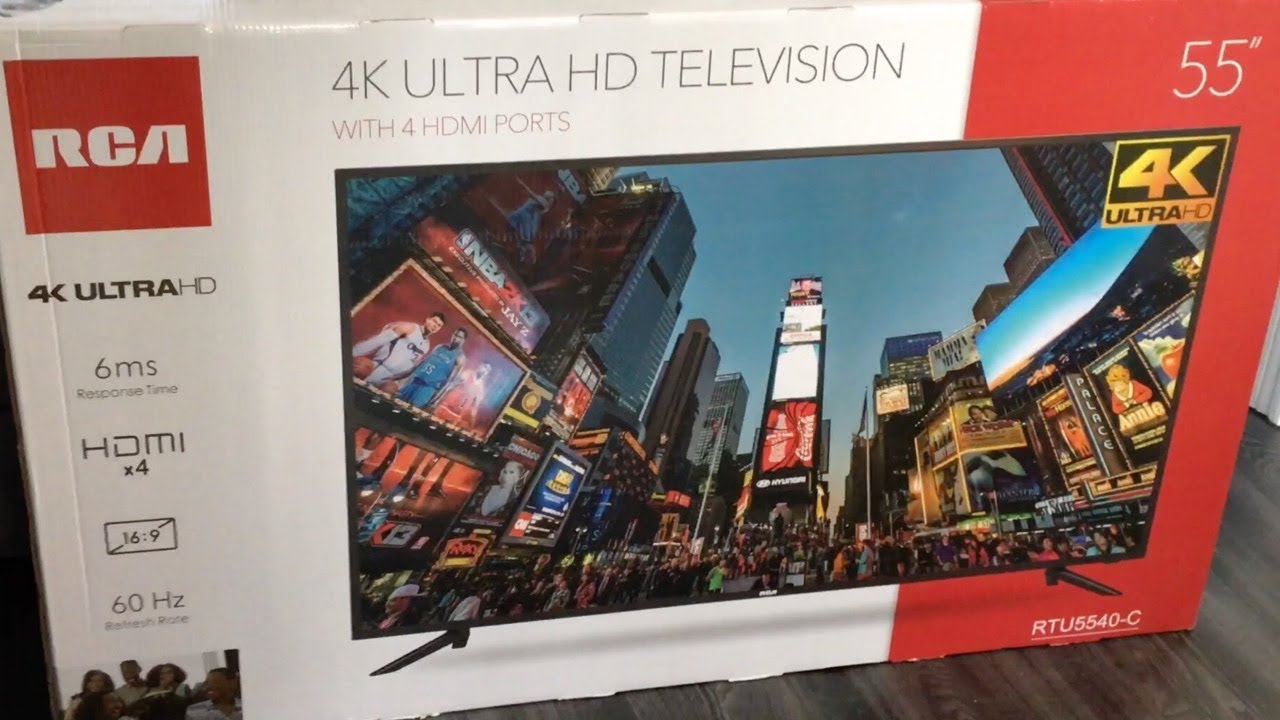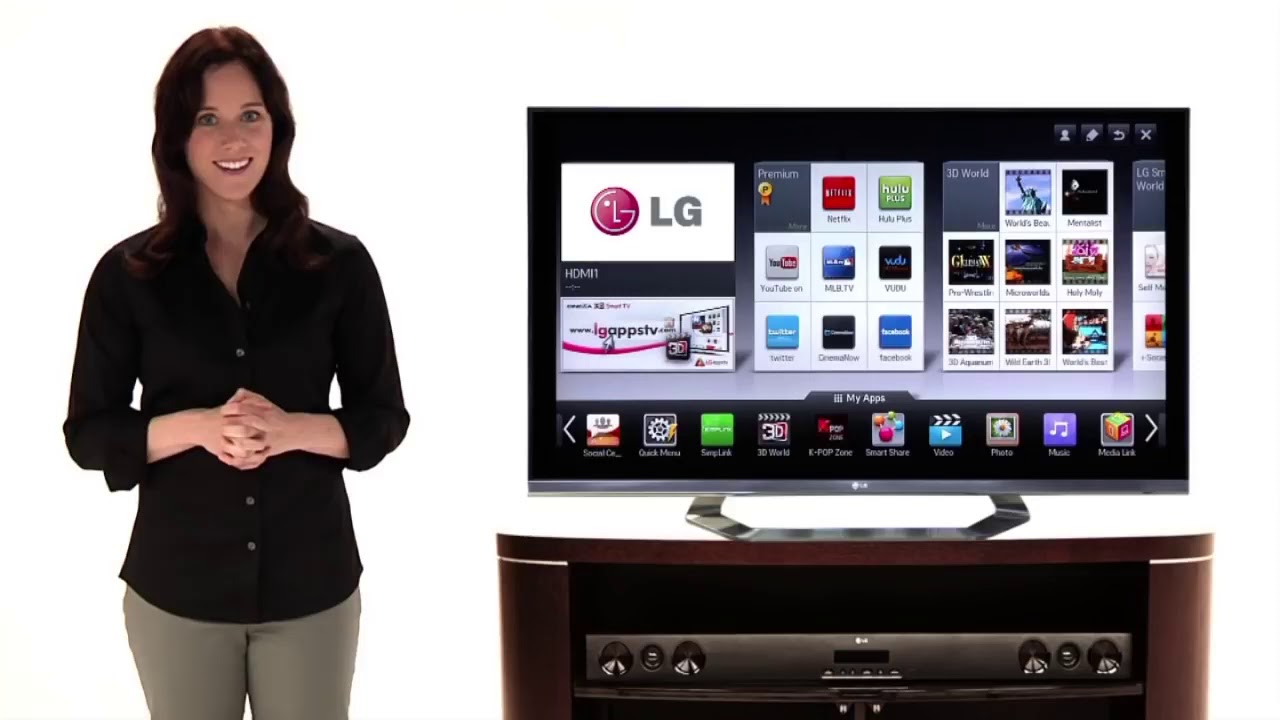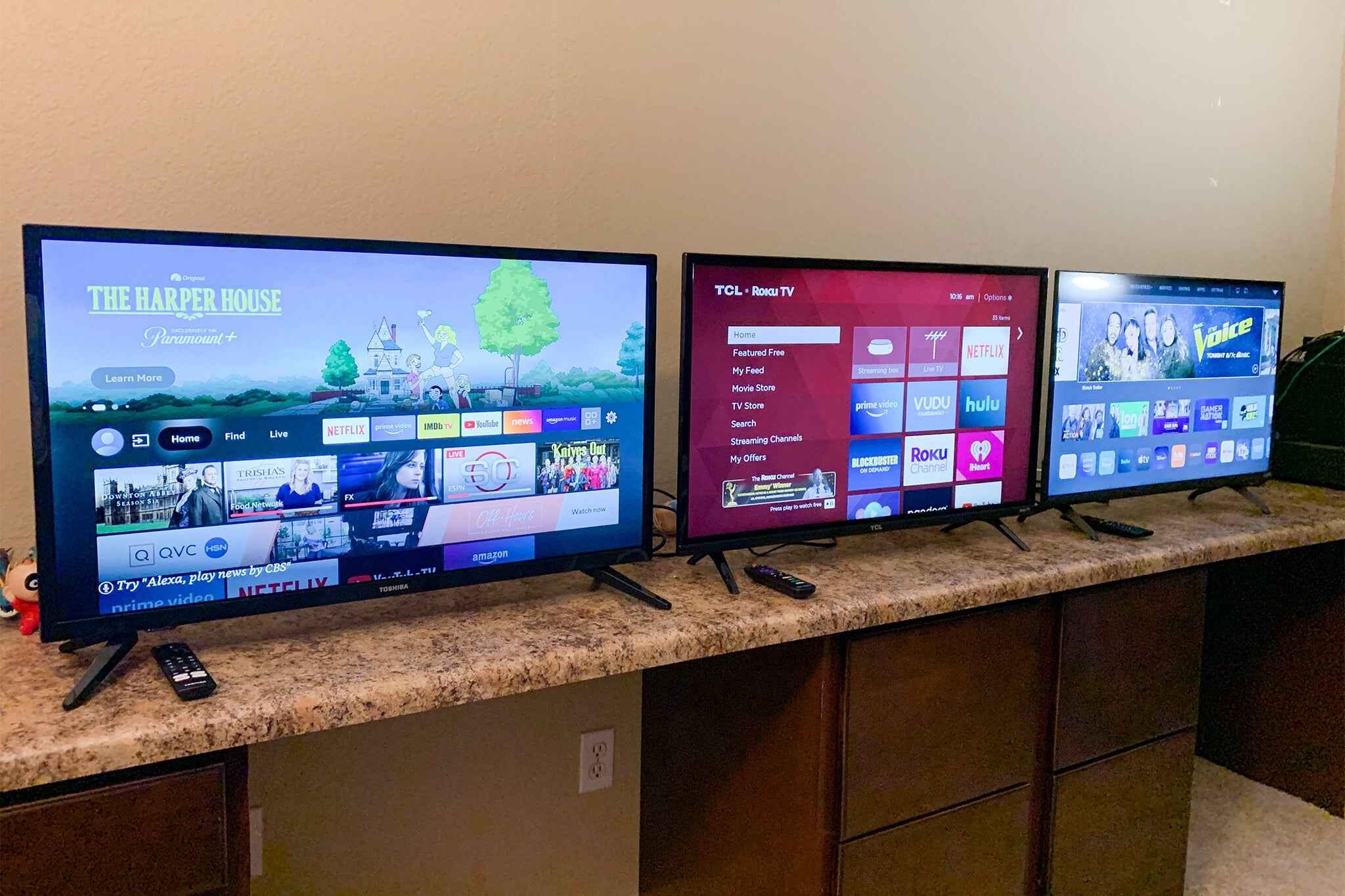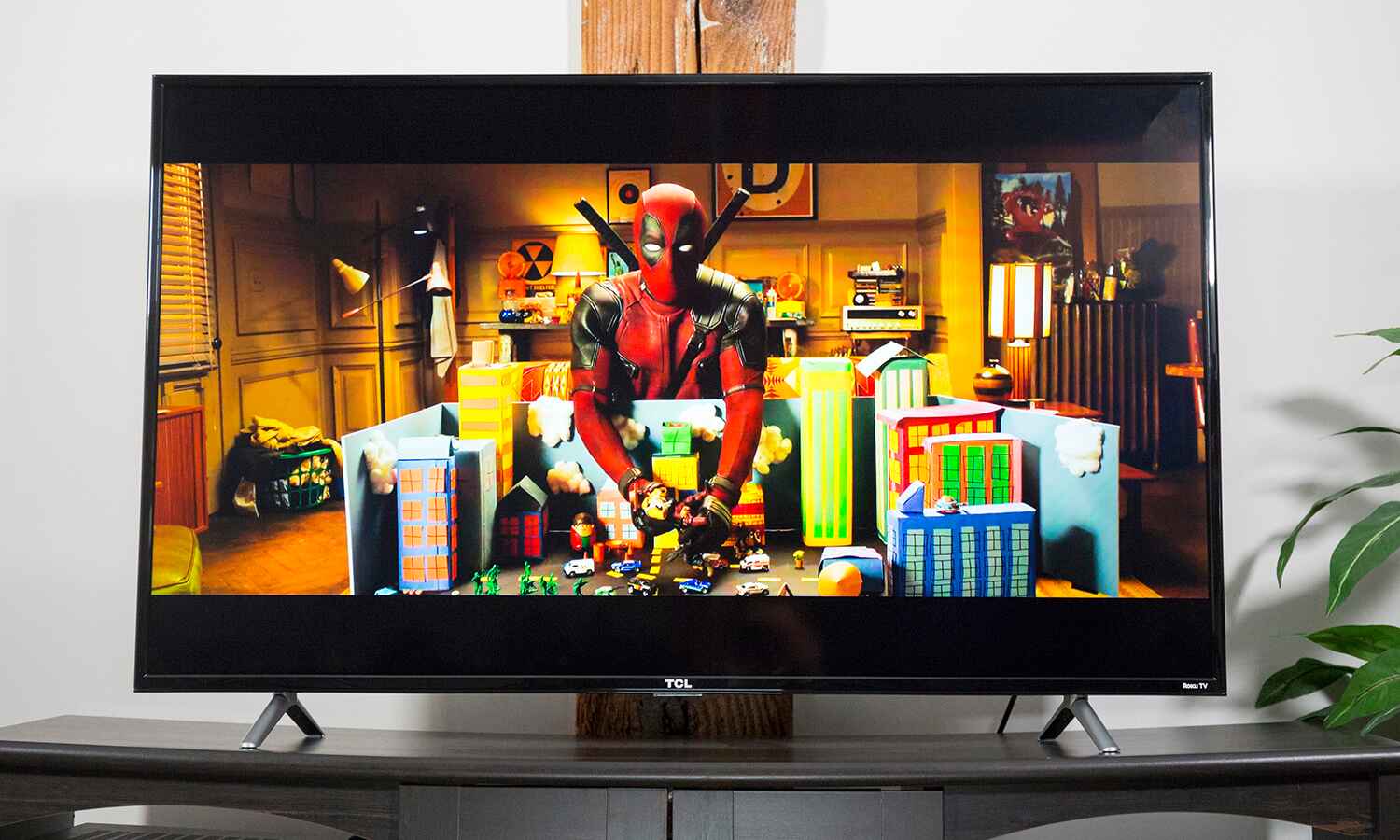Introduction
Welcome to the world of smart TVs, the next evolution in home entertainment. With their advanced features and connectivity options, smart TVs have become an indispensable part of modern households. Whether you are an avid gamer, a movie buff, or just looking to stream your favorite shows, having the right size smart TV can greatly enhance your viewing experience.
But how do you measure the size of a smart TV? It may seem like a straightforward task, but there are certain nuances to consider when determining the perfect size for your needs. In this article, we will guide you through the process of measuring the size of a smart TV, from the diagonal screen measurement to the width and height, as well as other essential considerations.
Before diving into the technicalities of measuring a smart TV, it’s important to understand why size matters. The size of your TV greatly influences your viewing experience, as it determines the level of immersion and visual impact. A TV that is too small might make it difficult to fully appreciate the details, while a TV that is too large may make it uncomfortable to watch from a close distance.
When buying a smart TV, it is essential to strike a balance between the screen size, your viewing distance, and the size of your room. A larger screen size may be desirable for a home theater setup, while a smaller screen size could be more suitable for a compact living room or bedroom.
Now, let’s dive into the nitty-gritty of measuring your smart TV size. By following these steps, you will be able to determine the perfect size for your viewing needs, ensuring an immersive and enjoyable entertainment experience.
Understanding TV Screen Size
Before delving into the process of measuring the size of a smart TV, it is important to understand how screen size is determined. The screen size of a TV is typically measured diagonally from one corner of the screen to the opposite corner. This diagonal measurement, expressed in inches, is what you often see advertised as the TV’s size.
It’s worth noting that the screen size refers to the area of the screen that is viewable, excluding any bezels or frames surrounding it. The bezel is the border around the screen that houses the TV’s internal components and adds aesthetic appeal to the design. Therefore, when measuring the TV size, you should only consider the actual screen area.
Another important factor to consider is the aspect ratio, which determines the ratio of the TV’s width to its height. Most modern TVs have a 16:9 aspect ratio, which is commonly known as widescreen. This aspect ratio is ideal for watching widescreen content, such as movies and TV shows, as it provides a more immersive viewing experience.
It is also worth mentioning that the screen size and the overall dimensions of a TV are not directly proportional. A TV with a larger screen size might have smaller dimensions if it has a slim bezel design. Alternatively, a TV with a smaller screen size might have larger overall dimensions if it has a thick bezel or built-in speakers.
Understanding the basics of TV screen size and aspect ratio will help you make an informed decision when choosing the right TV for your needs. It is important to consider your viewing preferences, the size of your room, and the available space for the TV installation. Now, let’s move on to the next step – measuring the actual size of the smart TV.
Measuring the Diagonal Screen Size
Measuring the diagonal screen size is the first step in determining the size of your smart TV. To do this, you will need a measuring tape or a ruler. Follow these simple steps to accurately measure the diagonal screen size:
- Place your TV on a flat and stable surface. Ensure that it is free from any obstruction or wall mount.
- Take the measuring tape or ruler and position it at one corner of the screen.
- Extend the measuring tape or ruler diagonally across the screen to reach the opposite corner. Make sure to keep the measuring tape or ruler straight.
- Note the measurement in inches or centimeters. This will give you the diagonal screen size of the TV.
For example, if the measuring tape or ruler reads 55 inches, then the diagonal screen size of your smart TV is 55 inches.
It’s important to measure the screen size accurately, as even a slight difference can impact your viewing experience. The diagonal measurement provides a good starting point for determining the appropriate TV size for your needs. However, it’s not the only factor to consider, as the overall dimensions of the TV and the available space in your room also play a crucial role.
Now that you have measured the diagonal screen size, let’s move on to the next step – measuring the width and height of the TV.
Measuring the Width and Height of the TV
In addition to measuring the diagonal screen size, it is essential to determine the width and height of your smart TV. This will give you a better understanding of the TV’s proportions and help you assess whether it will fit comfortably in your desired viewing location. Here’s how you can measure the width and height of your TV:
- Start by placing your TV on a flat and stable surface, ensuring it is free from any obstructions or wall mounts.
- Take a measuring tape or ruler and position it at one side of the TV’s screen.
- Measure horizontally from one side of the TV to the other to determine the width. Note the measurement in inches or centimeters.
- Next, measure vertically from the top of the TV’s screen to the bottom to determine the height. Again, note the measurement in inches or centimeters.
By measuring the width and height of the TV, you can get a clear idea of its dimensions and how it will fit into your space. This information is particularly useful if you have a specific spot or TV stand in mind for your smart TV.
Remember to consider the bezel size when measuring the width and height. The bezel, the frame surrounding the screen, can vary in thickness and add to the overall dimensions of the TV. To ensure accuracy, measure the actual screen area and exclude any bezel when noting down the width and height measurements.
Now that you have measured the width and height of your smart TV, you can move on to the next step – measuring the bezel size.
Measuring the Bezel Size
When measuring the size of a smart TV, it is important to take into account the bezel size. The bezel is the frame or border around the screen that houses the internal components of the TV. Measuring the bezel size will give you a better understanding of the actual screen-to-bezel ratio and how it might impact your viewing experience. Here’s how you can measure the bezel size:
- Place your TV on a flat and stable surface.
- Take a measuring tape or ruler and position it along the edge of the TV’s screen.
- Measure the distance between the edge of the screen and the edge of the bezel.
- Note the measurement in inches or centimeters.
Be sure to measure the bezel size on all sides of the screen, as it may vary. Some bezels might be uniform on all sides, while others may be thicker at the bottom or sides to accommodate speakers or additional features. By measuring the bezel size, you can determine the precise area of the screen that is viewable.
Keep in mind that the bezel size does not affect the advertised screen size, which is measured diagonally. However, it can impact the overall dimensions and aesthetic appeal of the TV. Consider the bezel size when calculating the available screen area and how it influences the TV’s suitability for your viewing needs and available space.
Now that you have measured the bezel size, let’s move on to the next step – measuring the TV stand or wall mount size.
Measuring the TV Stand or Wall Mount
Before finalizing the size of your smart TV, it is crucial to consider the dimensions of the TV stand or the wall mount that you plan to use. This step is essential to ensure a proper fit and stability for your TV. Here’s how you can measure the TV stand or wall mount size:
Measuring the TV Stand Size:
- Measure the width and depth of the TV stand using a measuring tape or ruler.
- Ensure that the measurements include any shelves or compartments that might hold the TV.
- Consider the weight-bearing capacity of the TV stand to ensure it can support the weight of your smart TV.
- Compare the measurements of the TV stand with the width and depth of your TV to ensure compatibility.
Measuring the Wall Mount Size:
- If you plan to mount your smart TV on the wall, measure the dimensions of the wall mount bracket.
- Measure the horizontal and vertical spacing between the mounting holes on the back of your TV.
- Ensure that the wall mount bracket you choose is compatible with the spacing of the mounting holes on your TV.
- Consider the weight capacity of the wall mount bracket to ensure it can support the weight of your smart TV.
Measuring the TV stand or wall mount size is crucial because it determines the placement options and stability of your smart TV. Make sure to choose a TV stand or wall mount that can comfortably accommodate the size and weight of your TV, allowing for a secure and visually pleasing setup.
With all the measurements in place, you can now consider the optimal viewing experience and other important factors for selecting the right size smart TV.
Considerations for Optimal Viewing Experience
When determining the size of your smart TV, it’s crucial to consider factors that contribute to an optimal viewing experience. Here are a few key considerations to keep in mind:
Viewing Distance:
One important factor is the distance between the TV and the seating area. The ideal viewing distance depends on the screen size and the resolution of the TV. As a general guideline, a viewing distance of approximately 1.5 to 2 times the diagonal screen size is recommended. This ensures that you can comfortably see the details on the screen without straining your eyes.
Room Size:
The size of the room also plays a crucial role. A larger room can accommodate a larger TV without overwhelming the space. Conversely, a smaller room may require a smaller TV to avoid a cramped or overpowering feel. Consider the dimensions and layout of the room to determine the appropriate TV size that balances visual impact and room aesthetics.
Resolution and Content:
The resolution of the TV and the type of content you consume should be taken into account as well. High-resolution displays, such as 4K or 8K, offer superior image quality, but they are more enjoyable when viewed from a closer distance. If you primarily watch standard-definition content or sit at a distance, a lower-resolution TV may be sufficient.
Room Lighting:
The lighting conditions in the room should also be considered. If the room is well-lit with natural light or has bright ambient lighting, a brighter TV screen or anti-glare technology may be necessary to maintain image clarity. Conversely, in a dark or dimly lit room, a higher contrast ratio and deeper blacks can enhance the viewing experience.
Personal Preferences:
Ultimately, your personal preferences and intended usage should guide your decision. Consider your specific needs, such as gaming, movie watching, or general TV viewing, and choose a TV size that offers the most immersive and enjoyable experience for your desired activities.
By considering these factors, you can select the right size smart TV that balances comfort, visual quality, and room aesthetics, ensuring an optimal viewing experience.
Conclusion
Choosing the right size for your smart TV is essential for an immersive and enjoyable viewing experience. By following the measurement techniques outlined in this article, you can accurately determine the diagonal screen size, as well as the width, height, and bezel size of the TV. Additionally, considering factors such as the TV stand or wall mount size, optimal viewing distance, room size, resolution, lighting conditions, and personal preferences will help you select the perfect TV size for your needs.
Remember, when it comes to TV size, bigger is not always better. It is crucial to find a size that suits your viewing distance, room dimensions, and content consumption habits. A properly sized TV will offer a balance between visual impact and comfortable viewing, elevating your entertainment experience.
Take your time to measure and consider all the factors mentioned in this article. This will allow you to find the ideal size that seamlessly fits into your space and complements your entertainment setup. Whether you’re watching your favorite movies, playing games, or enjoying popular TV shows, the right size smart TV will enhance your overall enjoyment and provide you with countless hours of entertainment.
So go ahead, take the measurements, consider the factors, and make an informed decision. Get ready to immerse yourself in a world of vibrant visuals, detailed images, and captivating content with your perfectly sized smart TV!







